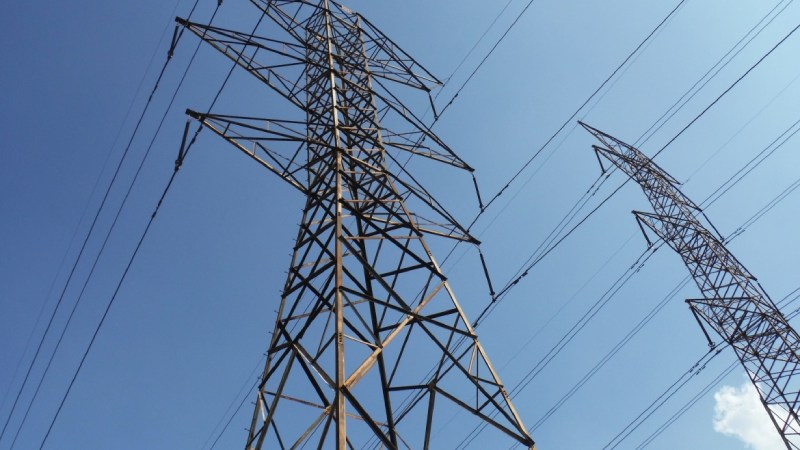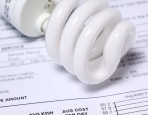Summary
- What is power factor?
Power factor is a measure of your electrical system’s efficiency. It’s the ratio of real power (used by your equipment) to apparent power (total power drawn). A higher power factor indicates better efficiency. - What are the effects of a low power factor?
A low power factor means your system is less efficient, which can cause energy loss, voltage fluctuations, and negatively impact equipment performance. - What is the power factor surcharge from BC Hydro?
BC Hydro charges a power factor surcharge to Medium and Large General Service customers with a power factor below 90%. The lower the power factor, the higher the surcharge. - What causes a low power factor?
Common causes include inductive equipment like motors and fans, non-linear loads like variable speed drives, defective capacitors, and harmonic currents. - How can I fix my power factor?
Installing power factor correction capacitors (PFCCs) can improve power factor. The location and sizing of these capacitors should match your facility’s load to avoid damage or inefficiency. - When should I consider an automatic PFCC?
If your facility’s power load varies significantly, an automatic PFCC system that adjusts capacitor use in real-time is ideal. - What are the benefits of correcting my power factor?
Correcting your power factor can eliminate surcharges, improve system efficiency, enhance equipment lifespan, reduce maintenance, and help meet LEED certification standards.
If you manage a commercial building or any large facility, you may have noticed a power factor charge on your BC Hydro bill. If you haven’t noticed it, you should check to make sure that your bill is not being charged any penalties, which could be quite significant. Thankfully, the power factor charge can easily be eliminated. Let’s take a look at what power factor is exactly and how you can put an end to any power factor charges.
What is power factor?
Power factor is your electrical system’s ability to use electric current to create useful work. If you have a low power factor, your circuit draws more current than a high power factor for the same amount of power that your load actually uses. In simpler terms, it’s a measure of efficiency of your electrical system.
More technically, power factor is your real power consumption divided by your apparent power consumption. Real power consumption, which is measured in kW, is the electricity that your electrical equipment actually uses in your system. Apparent power is the combination of both real power and reactive power to form the total power that your facility draws.
Reactive power, which is measured in kVAr, is extra electricity needed by your system by certain equipment, including ones that produce motion (eg. motors, pumps) and ones that have electronic components (eg. computers, fluorescent lights with electronic ballasts). As more reactive power is needed by your system, the less efficient it is.
The higher your power factor, the more efficient your system is. A power factor of 90% or higher is ideal and would allow your equipment to run well.
What are the effects of a lower power factor?
With a low power factor, your system is not as efficient, which could constrain your ability to receive real power and quality voltage. These inefficiencies could include loss of energy, fluctuation of voltage and other issues with power quality to your facility and other facilities nearby. As a result, your equipment could be negatively affected.
What is the power factor surcharge?
For Medium General Service or Large General Service customers of BC Hydro, you should see a line that shows your power factor. If your power factor is 90% or above, you will not incur a surcharge. If your power factor is below 90%, your bill will show the amount of your power factor surcharge.
Essentially, the power factor surcharge is the charge for using additional reactive power. The lower your power factor is, the higher the surcharge is as it creates inefficiencies in BC Hydro’s ability to provide you with electricity.
The surcharge is calculated according to the table from BC Hydro below.
| Power Factor | Surcharge |
| 90% – 100% | None |
| 88% – 90% | 2% |
| 85% – 88% | 4% |
| 80% – 85% | 9% |
| 75% – 80% | 16% |
| 70% – 75% | 24% |
| 65% – 70% | 34% |
| 60% – 65% | 44% |
| 55% – 60% | 57% |
| 50% – 55% | 72% |
| 0% – 50% | 80% |
What causes poor power factor?
A low power factor can be caused by old equipment that requires more reactive power. This is often caused by large loads from inductive equipment (eg. air compressors) or loads that draw current in a non-linear fashion (eg. variable speed drives).
A resonant frequency point exists in every electrical system based on resistive, inductive and capacitive loads. Your facility realistically will also have equipment that creates harmonic currents (eg. computer power supplies). If your system’s resonant frequency point and harmonic currents clash, it will significantly intensify the currents, which affects the power factor.
The following are likely to contribute to a low power factor:
- Large fans or motors
- Equipment with many transformers
- Capacitors that are the wrong size or defective
- Harmonics currents in a system from non-linear loads
How do I fix my power factor?
The way that a low power factor is resolved depends on the issue causing the low factor. Different solutions are available to handle different issues.
A common way to improve a low power factor is by having power factor correction capacitors (PFCC) installed to your electrical system. If your low power factor is caused by a linear inductive load, such as a fan, a capacitor can be used to counter the low power factor.
The location that your capacitor is installed can have an effect on the system overall. Choosing the right place for your capacitors depends on the location of your equipment that uses reactive power and the location that your facility receives electricity.
It is important to install capacitors to your system based on your facility load though. With an improper amount of capacitors used, the system may experience too much of a voltage increase, which could damage your equipment.
If your load is quite variable at different times, an automatic PFCC may be a more appropriate solution. An automatic PFCC detects the power factor needed and adds or removes capacitors or inductors to make corrections to the system.
What are the benefits of correcting my power factor?
Correcting your power factor could prevent you from needing to pay future power factor surcharges. Having your power factor corrected is a worthwhile investment as the savings from the surcharges could cover the costs of the fix itself.
Correcting your power factor has other cost-saving benefits as well. It could reduce how often you need to maintain or upgrade your transformers. With better voltage that provides power that is more clean and dependable, it could improve the operation and life of your equipment.
With an improved power factor, your electrical system will be more efficient overall. This could help you earn points toward a LEED certification. It would also result in fewer line losses, which could allow you to have more capacity for additional equipment without adding more infrastructure.
With so many advantages to correcting your power factor, there’s no real reason not to get it done. To get your power system running at peak efficiency and to avoid causing damage to your equipment with improper capacitors, get an expert opinion for your facility. With substantial experience in electrical installations, upgrades and maintenance, Red Ryno Energy can suggest the most appropriate solution for your needs. Whether you want to eliminate power factor surcharges to improve your power system or just have an energy assessment, contact us today.




